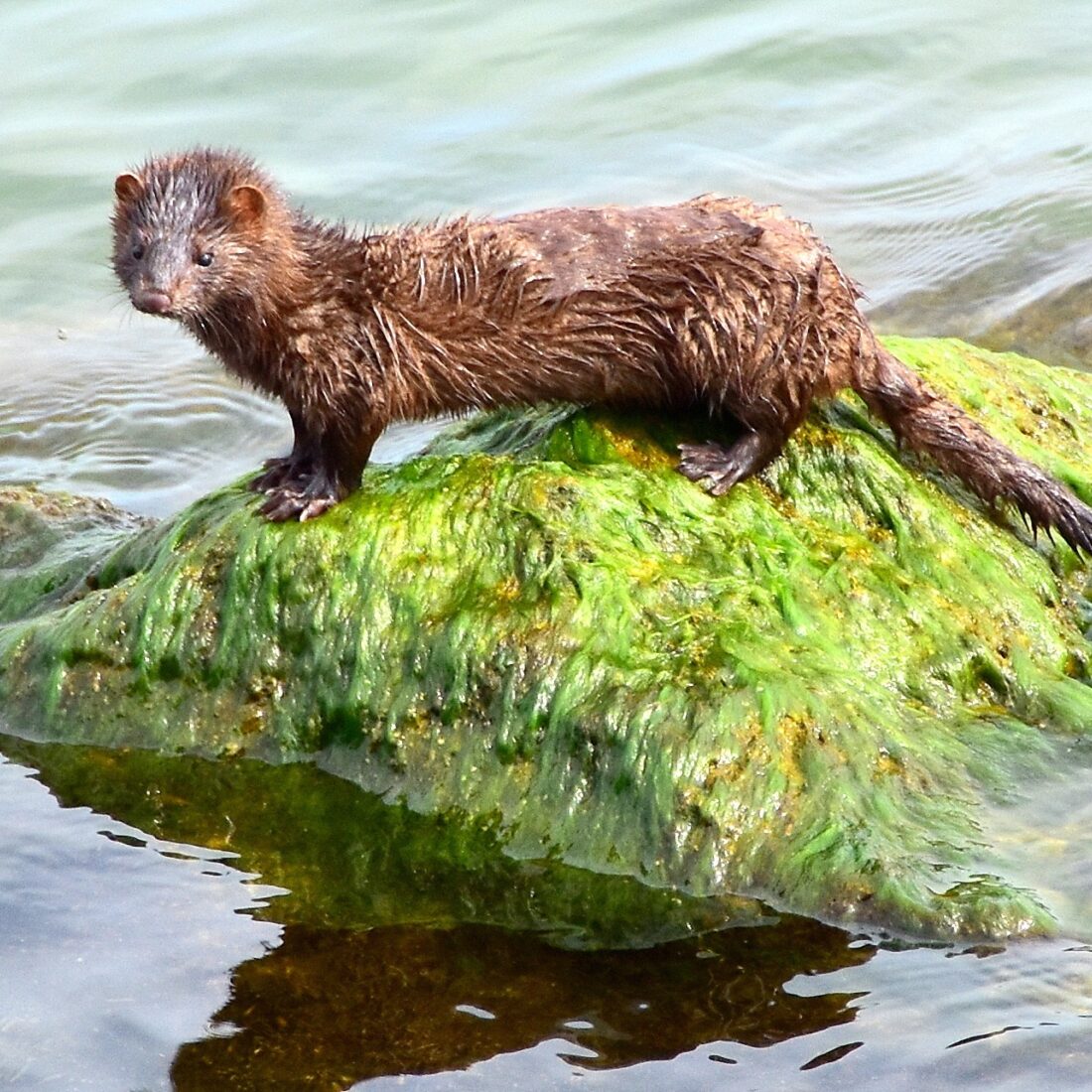Mustela vision
Native to North America, the American mink was introduced to the UK in the 1920s for fur farming. By the 1950s, escapes and deliberate releases had allowed them to establish wild populations—causing widespread ecological damage.
Mustela vision
Native to North America, the American mink was introduced to the UK in the 1920s for fur farming. By the 1950s, escapes and deliberate releases had allowed them to establish wild populations—causing widespread ecological damage.

Their body length is 30-47cm.
They usually have white patches on the chin and throat.
Their scat (poo) can contain bits of fur, pieces of bone and feathers.

Mink are opportunistic predators with a broad diet and a big impact:
In the UK, water vole populations have been in decline due to the loss, degradation and fragmentation of their habitat. However, the decline accelerated rapidly following the introduction of mink in the wild and, left uncontrolled, could lead to their extinction.
American mink are often mistaken for polecats due to their similar size and footprints. However, you can tell them apart by looking for distinct white markings on the face—a key feature of polecats that mink usually lack.
American mink is listed under Schedule 9 to the Wildlife and Countryside Act 1981 for England, Wales and Scotland. As such, it is an offence to release or allow the escape of this species into the wild.
The urgency of the situation has led to water voles being listed as a priority species in the UK Biodiversity Action Plan. Humane mink control is now a key conservation strategy.
We’re proud to be leading a project that’s already making a difference and aims to bring back native water voles to Cumbria.
Over the last four years, in the Lowther and Haweswater areas, we’ve combined humane mink control with improvements to habitats to create the right conditions for water voles to be successfully reintroduced.
To date, we have released 750 water voles in carefully selected locations and thanks to the support of the funders, local farmers and volunteers, they're thriving!